There’s a certain thrill when we imagine stepping into the worlds of our favorite games, dodging lasers instead of just tapping buttons. These days, that fantasy is closer to reality than ever, thanks to VR and AR in gaming. We’re not just watching from the sidelines anymore; we’re jumping right into the action or bringing game characters into our own living rooms. So, let’s take a walk through the digital looking glass and explore what these technologies really mean for playtime.

- Both VR and AR are pushing the boundaries.
VR and AR in Gaming
Remember how, as kids, we’d pretend sticks were swords and the living room carpet was lava? VR and AR in gaming are, quite simply, grown-up versions of that imagination; only supercharged by technology. In this article, we’ll dive into what virtual reality and augmented reality games are, how they’re different, and why they’re changing the way we play. Whether you’re new to the scene or curious about that weird-looking headset at your local store, we’ll guide you through step by step.
1. Introduction: Entering New Realities
Picture putting on a headset and suddenly standing atop a mountain, or holding your phone up to watch dragons fly through your neighborhood. That’s the world of immersive gaming experiences, and it’s more accessible than it sounds. VR and AR have leapt off the pages of sci-fi novels and landed right in our hands, and on our faces! We’re here to explain how, why, and what’s next.
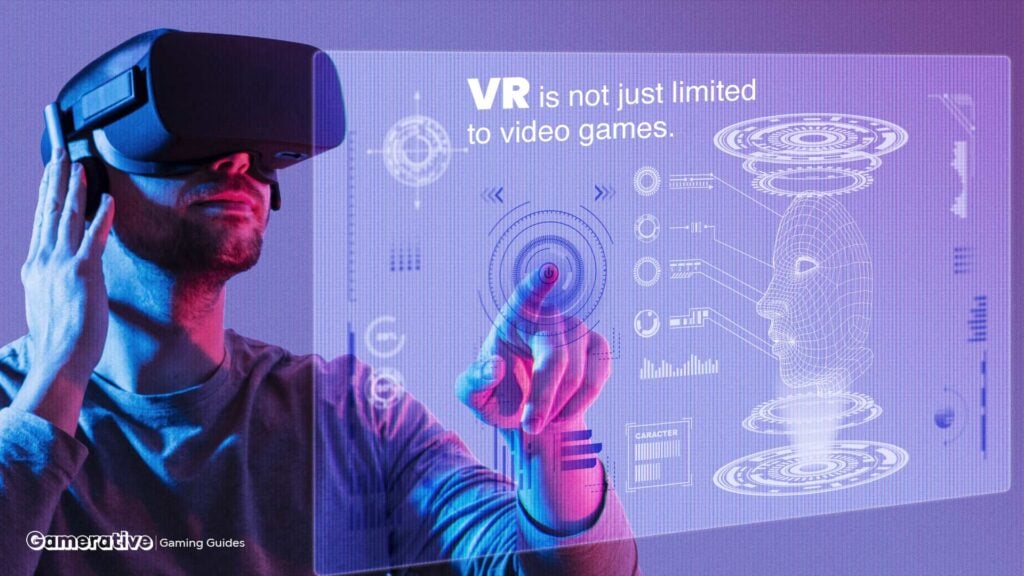
2. What is Virtual Reality (VR) in Gaming?
Let’s begin our discussion about VR and AR in gaming by learning about VR. Virtual reality games create an entirely digital world for players to step inside; there’s no peeking through a window; you’re surrounded on all sides. To make it happen, you’ll need a VR headset (like Oculus Quest, HTC Vive, or PlayStation VR) and, often, some motion controllers. These systems use sensors, cameras, and some technical magic to make sure that when you turn your head, the game world turns with you. No joke, the first time we tried VR, we tried to lean against a fake wall and almost tumbled.
In games like Beat Saber, you’re slicing neon blocks to the beat. Or in Half-Life: Alyx, you’re exploring an alien-invaded city, ducking behind actual couches (if your living room’s big enough). VR isn’t just a screen; it’s a portal.
Quick VR Facts
- Headsets: Oculus, PlayStation VR, HTC Vive
- Needs plenty of space; watch out for coffee tables!
- Top genre: Rhythm, shooters, adventure
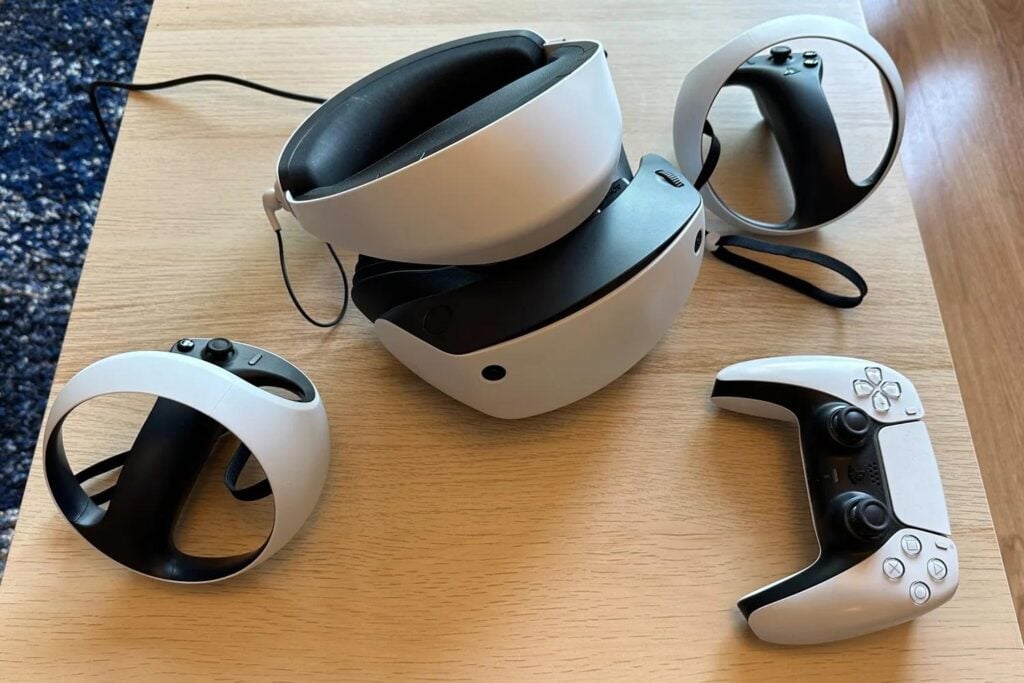
- Haptic feedback in VR increases immersion.
3. What is Augmented Reality (AR) in Gaming?
Instead of replacing your surroundings, AR overlays digital elements onto your real world. With AR, you could point your phone’s camera at your sofa and see a Pikachu chilling there. Most AR games work with smartphones or tablets, while some, like Microsoft’s HoloLens, use special glasses.
Pokémon GO was the AR game that took everyone outside. Remember watching crowds gather in parks or malls, phones out, chasing invisible Pokémon? That’s AR at work; real places mixed with virtual creatures. Minecraft Earth and Harry Potter: Wizards Unite followed this formula, layering fantasy atop our familiar streets.
What’s cool is that AR sneaks gaming into daily life, blurring the lines between play and reality in ways we hadn’t imagined a decade ago.
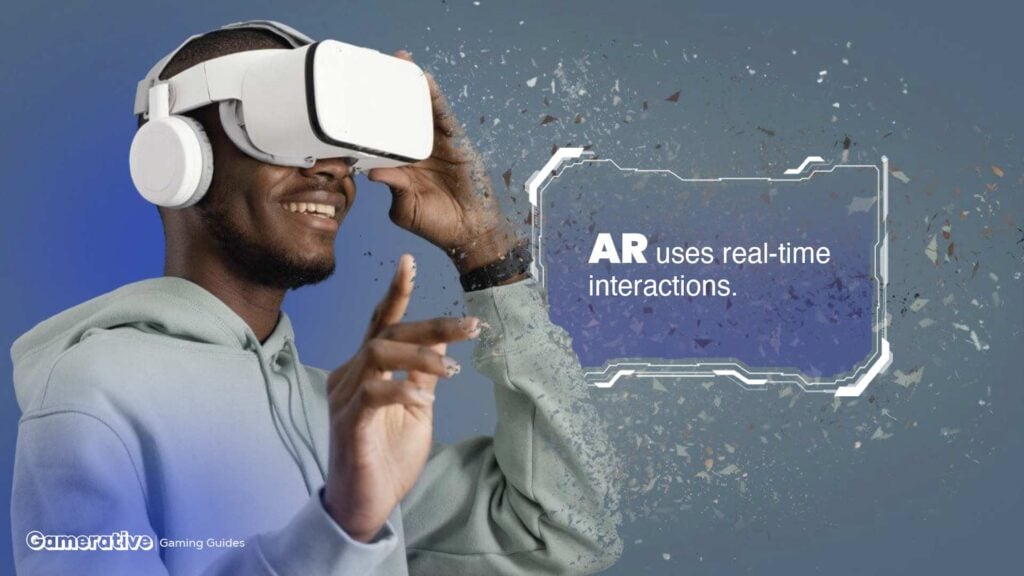
4. Key Differences Between VR and AR in Gaming
It helps to picture VR and AR in gaming on a spectrum. VR wants to take you away from the real world and drop you into a digital one. You’re fully immersed; think Half-Life: Alyx or The Walking Dead: Saints & Sinners. On the flip side, AR mixes digital fun with your physical surroundings, as in Pokémon GO.
Comparison Table: VR vs AR in Gaming
| Aspect | VR Gaming | AR Gaming |
| Immersion | Full, replaces your environment | Partial overlays on the real world |
| Equipment | Headset, controllers, sensors | Smartphone/tablet, AR glasses |
| Accessibility | More expensive, needs space | More accessible, play anywhere |
| User Activity | Move, duck, reach; real physical interaction | Tap, swipe, and walk around with the device |
| Top Examples | Beat Saber, Half-Life: Alyx | Pokémon GO, Minecraft Earth |
Some games, like The Walking Dead: Our World, even blend the approaches, giving us new ways to play.

- VR enhances realism in genres like horror.
5. Advantages of VR and AR in Gaming
Every time we share VR with friends, there’s that WOW moment: they gasp, duck, or even laugh out loud. That’s the magic of virtual reality gaming; it tricks your brain just enough to make you feel truly “there.” You can escape, interact with objects, and even get a little workout (just ask anyone who’s played Beat Saber for an hour).
AR, though, has its own charm. It invites everyone into the game, no headset required; just whip out your phone. The social aspect shines when parks fill up with Pokémon GO hunters or families set up their iPads for AR board games. Both VR and AR in gaming create new ways to tell stories and solve puzzles, and there’s even growing buzz about their roles in education and rehabilitation.
“VR made me feel like I was actually in space for the first time,” says a friend who tried No Man’s Sky VR. And for us, AR’s joy is watching kids mix the magical with the mundane; finding Pikachu in their backyard!
6. Challenges and Limitations of VR and AR in Gaming
Let’s be honest, though; VR and AR aren’t perfect. Early VR could cause a bit of motion sickness, and sometimes still does if you spin around too fast. AR chews through phone batteries and sometimes struggles in bright light. And the price? High-end VR kits can cost more than a console, while AR games can be dependent on having a fairly modern smartphone.
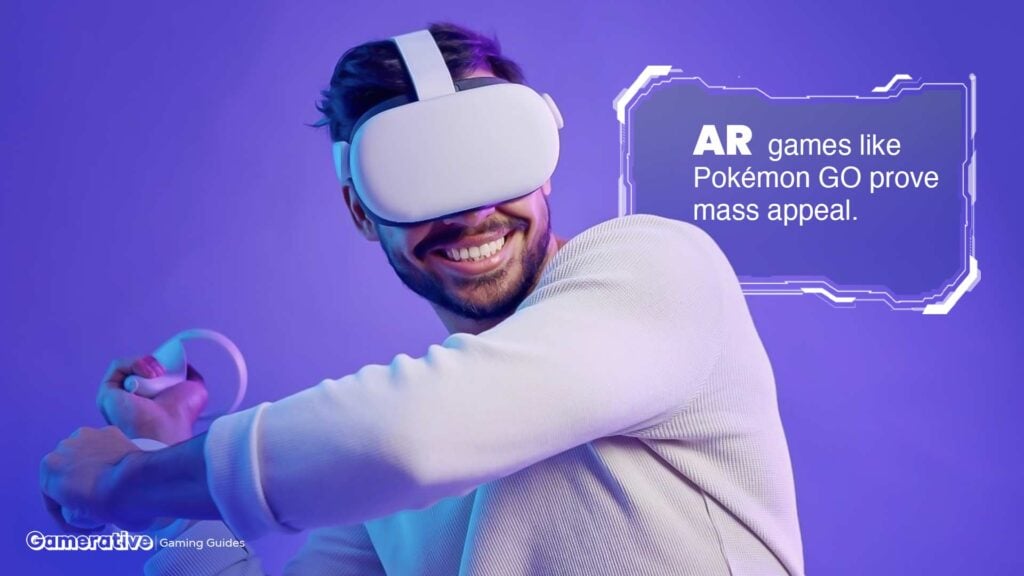
Developing VR and AR content is tough, too. Studios need new skills, advanced hardware, and plenty of money just to get started. Not every game makes it to the finish line, and some that do still feel clunky. Privacy is also worth thinking about; AR games often use GPS and cameras, which not everyone is comfortable with.
Still, the industry keeps adapting. Games like Moss and Star Wars: Galaxy’s Edge have shown that it’s possible to overcome these hurdles one thoughtful choice at a time.
7. The Future of VR and AR in Gaming
It’s wild to think how quickly VR and AR in gaming are evolving. Lighter VR headsets, smarter AR glasses, haptics that make you feel the virtual breeze; these are all around the corner. Imagine a game that learns from your movements or generates new challenges based on your mood. With advances in AI and cloud computing, we might soon see a VR MMO where thousands share a persistent world, or AR games that turn your whole city into a playground.
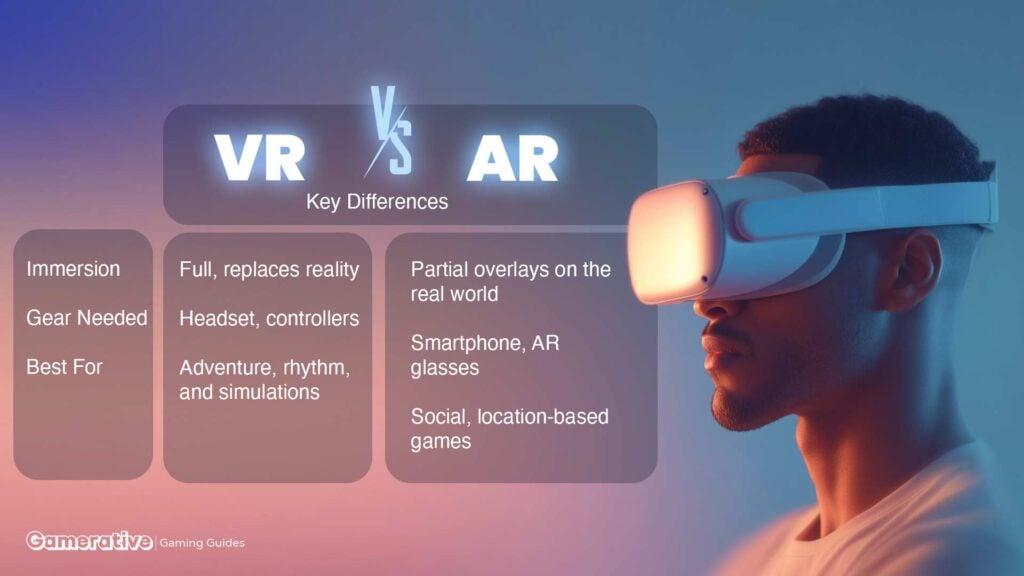
Upcoming games like Assassin’s Creed Nexus VR or rumors about Apple’s AR headset hint at a future that’s both exciting and unpredictable. The blend of physical and digital will only get more creative, with gaming leading the way for fields like education and medical training, too.
What would you do if you had a holodeck in your house?

- Blending physical and virtual play.
8. Finishing Thoughts: Embracing New Realities
Who’s ready to explore? VR and AR in gaming are more than buzzwords; they’re invitations to step into new worlds, solve challenges in new ways, and see the familiar with fresh eyes. The future of gaming is interactive, immersive, and inclusive, and there’s a place for everyone at the table, or in the headset.
We’d love to hear your stories: Have you braved a VR zombie apocalypse, or wandered your city for rare Pokémon? Tell us in the comments, and let’s keep exploring these new realities together. Curious where VR and AR will take us next? Share your favorite immersive moments or biggest “wow” discoveries in the comments!
Learn about the inside out of video games world and industry via Gamerative.
FAQs: VR and AR in Gaming
Q1. Can you play VR or AR games without any special equipment?
While AR games often work on most smartphones, VR games require specific headsets and controllers for the full experience.
Q2. Are VR and AR games safe for kids?
Many are family-friendly, but always check age ratings and make sure kids take breaks, especially with VR, as it’s easy to lose track of time.
Q3. Do VR and AR in gaming need a super-fast internet connection?
Not always. Local VR games don’t need much bandwidth, but online VR/AR or multiplayer games will benefit from a strong connection.
Q4. Can you use VR for things besides gaming?
Absolutely! VRs are already used for education, medical training, therapy, and even virtual tourism; gaming’s just the start.




